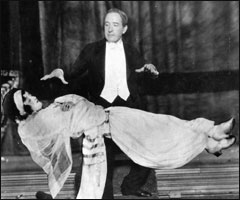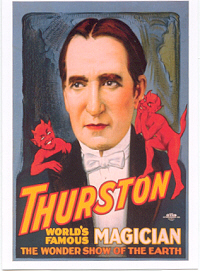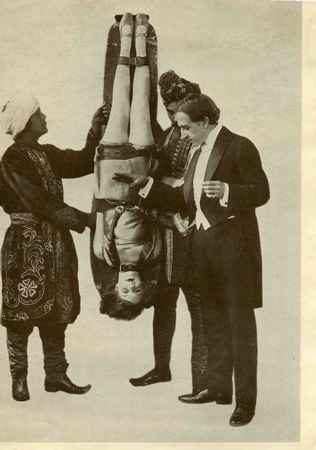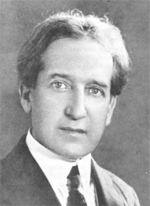

Columbus, Ohio
Inducted - 2004

 One of four boys born
to a carriage maker in Columbus, Ohio, Howard Thurston would become one
of the most popular magicians in America.
One of four boys born
to a carriage maker in Columbus, Ohio, Howard Thurston would become one
of the most popular magicians in America.
Along with Harry Houdini, T. Nelson Downs, and Horace Goldin, Thurston would dominate the theatrical era during the first quarter of the twentieth century before the prominence of radio and the motion picture.
Born in 1870, Howard Thurston began doing card tricks at a young age. Throughout his career, he always kept a card routine in his show. It was not long before he began experimenting with illusions. Working his way through tent shows and vaudeville, he took his own show on a world tour in 1907. The following year, he joined the great American magician Harry Kellar. On his farewell tour in 1908, Kellar introduced Thurston as his successor.
 Through
the teens and twenties, Thurston toured his show of illusions across the
country and around the world delighting audiences with the Tubes of Tubal,
the Dido Illusion, the Levitation of Princess Karnac, and the Million
Dollar Mystery. The show could range from the exotic, such as the East
Indian Rope Trick (with real Indian conjurers!), to the fantastic in the
everyday, such as a vanishing Willys-Overland automobile.
Through
the teens and twenties, Thurston toured his show of illusions across the
country and around the world delighting audiences with the Tubes of Tubal,
the Dido Illusion, the Levitation of Princess Karnac, and the Million
Dollar Mystery. The show could range from the exotic, such as the East
Indian Rope Trick (with real Indian conjurers!), to the fantastic in the
everyday, such as a vanishing Willys-Overland automobile.
A thirty-third degree mason, his show often contained words associated with Masonic ritual. And although he never actually became a minister, Thurston would often address Sunday services in the town where he was appearing that week. Always, the great magician acted as the liaison between our world and the world of illusion.
He played the part
of the storyteller, making the psychological connection between himself
and the audience, gently persuading them to suspend their disbelief and
accept his world of hypnotized princesses and palatine spirits, villainous
devils and ancient phantoms.

The early 1930s faced the decline of road shows in America. Boston's Tremont Theater saw Thurston's last great full evening show in April of 1931. He decided he would adapt to the new theatrical conditions of the 1930s, playing stages in movie houses.
He selected all of his best and most complex tricks and increased the timing of the entire show. He was now doing four shows a day as opposed to the ten performances a week of the old days.
His assistants begged
him to cut back, to make the show easier on himself. In 1935, Thurston
suffered a cerebral hemorrhage during a performance in Charleston, West
Virginia. On March 20, 1936 he suffered a second stroke and died on April
13 at the age of 66.
| The
Guide - abracaDACRI
- school - mall
- books - organizations
- contact us - hall
of fame - news
©2000 - 2009 MagicWebChannel.com |
 Howard
Thurston
Howard
Thurston